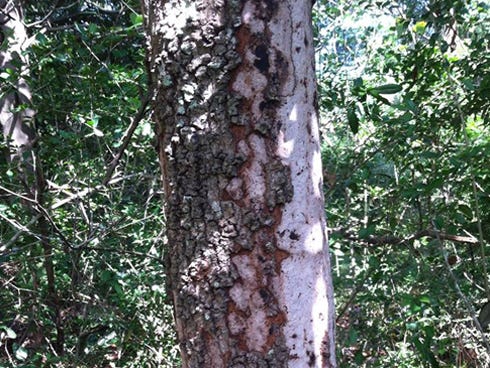
Many Okaloosa County residents have had problems with their oak trees this year.
Some trees have declined in health; others died. Several factors contribute to this issue, and not every tree may be suffering from the same combination of things.
However, one major culprit is hypoxylon canker, which is caused by a fungus normally present in oak trees' outer bark and usually doesn’t hurt them.
When other sources of stress weaken the tree, the fungus can quickly take over and eventually kill it.
Hypoxylon canker usually appears as pale patches on the tree's trunk, where bark is missing.
Unfortunately, once it becomes enough of a problem to be noticeable, there are no easy options to fix it. In fact, the fungus itself is almost always a secondary problem; it moves in when other factors weaken the tree.
Instead of trying to treat the canker, it is better to prevent sources of stress that could lead to disease such as hypoxylon canker taking over.
When planting trees, choose a location that's not too close to other trees, gets plenty of sunlight, and is not waterlogged or too dry.
Owners of pastures where animals — such as cattle or horses — graze should ensure that soil around the tree does not become too compacted. Exclude animals from the area where most roots are present or by aerating the soil.
Controlling moisture levels, if possible, can also help; too much or too little water for an extended period can cause stress.
If a tree succumbs to the disease, remove it. Dispose of the debris by burning to avoid spreading spores to other nearby plants.
Evan Anderson is an agent at the University of Florida's Institute of Food and Agricultural Sciences Extension office in Crestview.
This article originally appeared on Crestview News Bulletin: ANDERSON: Prevent this fungus from killing Okaloosa trees
